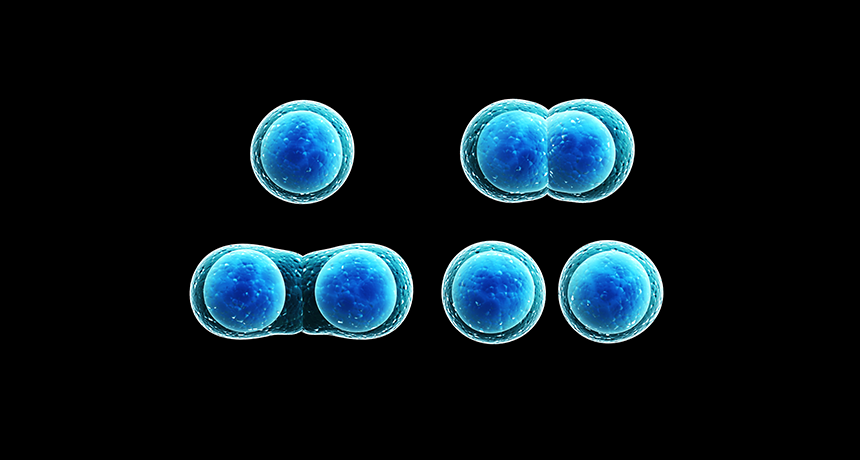bacteria (singular: bacterium) Single-celled organisms. These dwell nearly everywhere on Earth, from the bottom of the sea to inside other living organisms (such as plants and animals). Bacteria are one of the three domains of life on Earth.
cell The smallest structural and functional unit of an organism. Typically too small to see with the unaided eye, it consists of a watery fluid surrounded by a membrane or wall. Depending on their size, animals are made of anywhere from thousands to trillions of cells. Most organisms, such as yeasts, molds, bacteria and some algae, are composed of only one cell.
cell membrane A structure that separates the inside of a cell from the outside of it. Some particles are permitted to pass through the membrane.
chromosome A single threadlike piece of coiled DNA found in a cell’s nucleus. A chromosome is generally X-shaped in animals and plants. Some segments of DNA in a chromosome are genes. Other segments of DNA in a chromosome are landing pads for proteins. The function of other segments of DNA in chromosomes is still not fully understood by scientists.
DNA (short for deoxyribonucleic acid) A long, double-stranded and spiral-shaped molecule inside most living cells that carries genetic instructions. It is built on a backbone of phosphorus, oxygen, and carbon atoms. In all living things, from plants and animals to microbes, these instructions tell cells which molecules to make.
gut An informal term for the gastrointestinal tract, especially the intestines.
membrane A barrier which blocks the passage (or flow through) of some materials depending on their size or other features. Membranes are an integral part of filtration systems. Many serve that same function as the outer covering of cells or organs of a body.
mitosis A type of cell division in which a cell divides to produce two identical cells. First, the cell completely copies its DNA. The DNA then forms into chromosomes, and the chromosome copies pair off as chromatids. Those chromatids get lined up in the center of the cell, and the pairs get pulled apart, until there is one copy of all the cell’s DNA at each end of the cell. Then, the cell itself elongates and divides. Mitosis is the main method used to create more cells in the body, from growth to healing.
nucleus Plural is nuclei. (in biology) A dense structure present in many cells. Typically a single rounded structure encased within a membrane, the nucleus contains the genetic information. (in astronomy) The rocky body of a comet, sometimes carrying a jacket of ice or frozen gases. (in physics) The central core of an atom, containing most of its mass.
organism Any living thing, from elephants and plants to bacteria and other types of single-celled life.
starfish A type of sea creature that is shaped like a star. Starfish, also known as sea stars, are not true fish. They are related to sand dollars, sea urchins and sea cucumbers.

